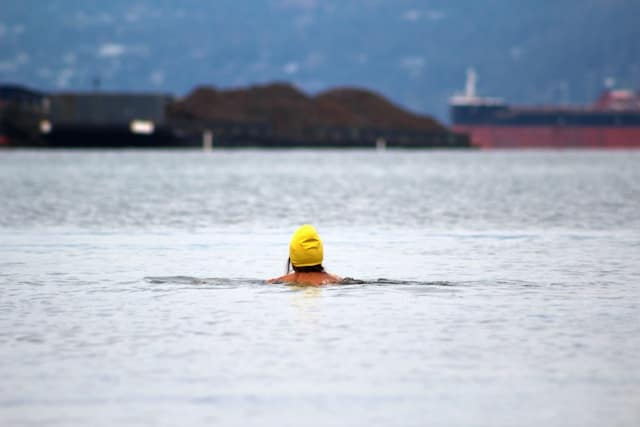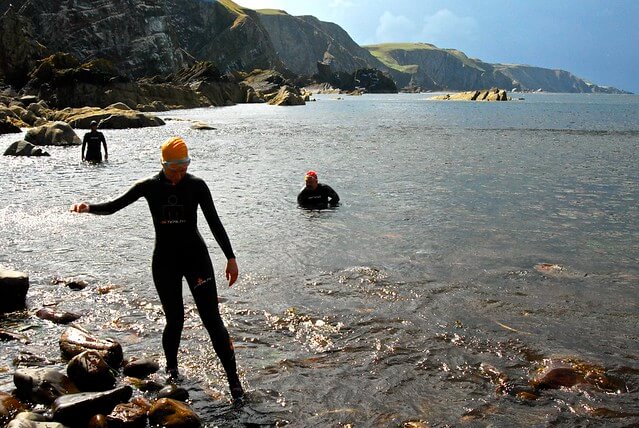As we finally draw closer to March, there’s been a sense of spring in the air. The odd daffodil has popped up, skies are seemingly bluer every now and then, days are getting longer and temperatures are gradually rising into double digits.
This will undoubtedly be a time when many of us are warming up, both literally and figuratively, to the idea of more outdoor activity, and in particular wild swimming. Whether you’re a seasoned sea, lake, or river swimmer or are looking to get into the wonderful world of wild swimming for the first time, spring can be a great place to start.
However, there are a few points to remember. Like wild swimming at any time of the year, there are always considerations for a safe and enjoyable experience. With that in mind, here are some top tips to make the most of your springtime wild swimming adventures.
Always Check the Water Temperature Before You Go In
Spring may bring warmer air temperatures, but water temperatures can still be chilly, especially in the early months. Particularly for sea swimmers, it is well known that the sea is generally coldest during spring, which makes sense given that the water has experienced cool air temperatures for the best part of 5 or 6 months.
Before taking the plunge, always check the water temperature using a reliable thermometer, or checking online. Even if the air temperatures are warm, there is always a risk of your core body temperature getting cold and then developing further complications. This is particularly true if you are jumping into the water for the first time in a while.
Make Sure You Have the Right Swimming Gear
Choosing the appropriate wild swimming gear is essential for a comfortable and safe wild swimming experience. In addition to a wetsuit or thermal swimwear, consider wearing swim caps to retain heat and reduce heat loss from your head. Water shoes or neoprene socks can also provide protection and traction on slippery surfaces, while swimming gloves do wonders in keeping your hands warm.
For more information in what to bring out for potential cold waters in spring, check out our guide on cold water swimming gear.
Stay Warm After Swimming
To prevent post-swim chills, have warm, dry clothing and towels readily available. A cozy fleece or insulated jacket, along with a change of clothes, will help you retain body heat as you dry off. Investing in a swimming robe to have to hand (at all times of the year) is highly recommended and there are many of great options on the market.
Consider bringing a thermos filled with hot drinks like tea or hot chocolate to warm up from the inside out. If you’re lucky enough to swim in a place that operates a sauna nearby (many UK tidal pools have this feature) then reserve a spot after your swim.
General Safety Tips for Swimming in Spring
Safety should always be a top priority when wild swimming, particularly in spring when water conditions can be unpredictable, and still pretty cold for the most part. Here are some general safety tips to keep in mind:
- Swim with a buddy whenever possible. Having someone else present can provide assistance in case of an emergency (and can also help you brave those temperatures!)
- Be mindful of currents, tides, and underwater hazards such as rocks or submerged branches.
- Familiarise yourself with the water depth and entry and exit points. Choose swimming spots with gradual entries and avoid areas with sudden drop-offs.
- Pay attention to your body and know your limits. If you start feeling fatigued or too cold, exit the water immediately and warm up.
By following these top tips for wild swimming in spring, you can enjoy a safe and exhilarating outdoor experience while connecting with nature in its purest form. Remember to always prioritise safety, stay informed about water conditions, and savor every moment of your wild swimming adventures this spring.
Remember the more you brave the water at this time of year the more you’ll get accustomed to the temperatures. It’s all about perseverance!




